Gastroscopy (Upper Gastrointestinal Endoscopy)
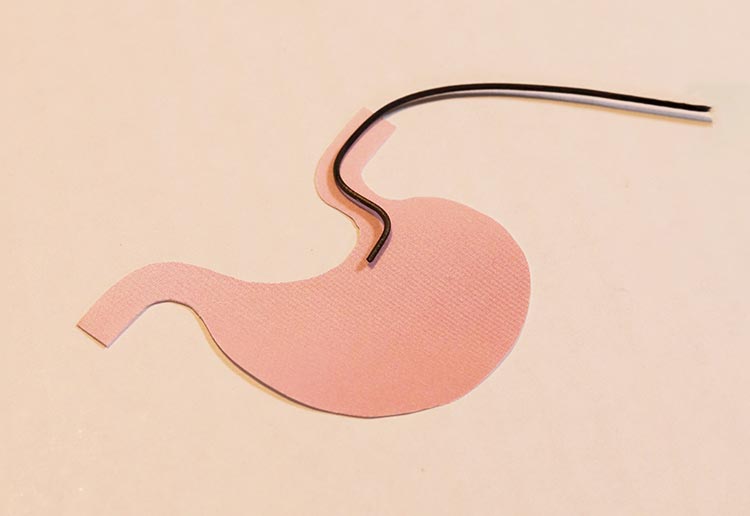
Gastroscopy (upper gastrointestinal endoscopy) is a diagnostic procedure that uses a small camera to examine the esophagus and stomach for polyps, cancer, inflammation, and other abnormalities.
The images captured by the gastroscope are displayed in real-time on a monitor. If any suspicious lesions are found, a tissue sample can be collected for pathological examination to confirm a diagnosis or check for Helicobacter pylori infection.
Regular gastroscopy examinations significantly improve the chances of early detection of stomach cancer. We particularly recommend routine gastroscopy for individuals with chronic atrophic gastritis or Helicobacter pylori infection.
Conditions Detectable by Gastroscopy
- Gastroesophageal reflux disease (GERD)
- Esophageal cancer
- Hiatal hernia
- Gastritis
- Gastric and duodenal ulcers
- Esophageal cancer
- Stomach cancer
- Polyps (esophagus, stomach, duodenum)
- Esophageal and gastric varices
- Submucosal tumors (esophagus, stomach, duodenum), etc.
Recommended for Individuals with the Following Symptoms or Concerns
- Pain around the upper abdomen
- Heartburn
- Sour regurgitation
- Suspected chronic gastritis
- Unexplained weight loss
- Need for stomach cancer screening
- Suspected Helicobacter pylori infection
- Loss of appetite, etc.
Early-stage stomach cancer often presents no noticeable symptoms, leading to late-stage diagnosis when metastasis has already occurred. Even without symptoms, regular gastroscopy can detect and allow for the early treatment of stomach cancer. We strongly recommend individuals over 40, who are at an increased risk, to undergo gastroscopy.
Features of Our Gastroscopy Examination
Feature 1: Examination by an Experienced Specialist
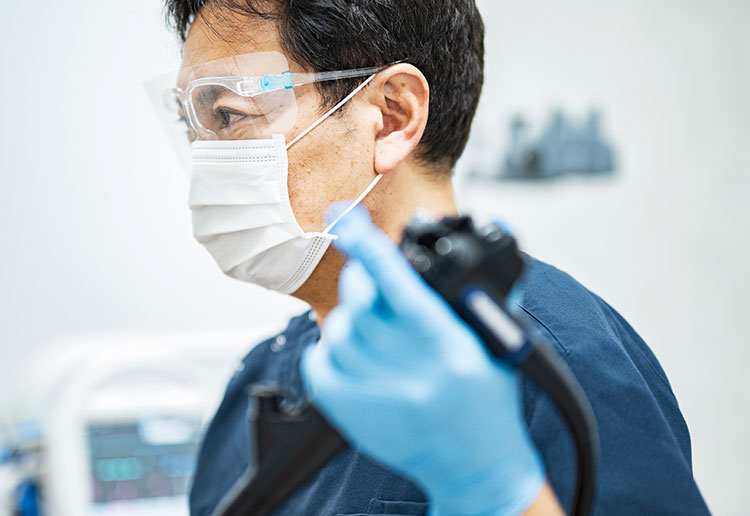
In large medical facilities, different doctors may perform the procedure each time, leading to variations in skill and approach. At our clinic, all gastroscopy examinations are conducted by our experienced director, who has trained at advanced medical institutions and has performed over 45,000 upper endoscopic procedures, ensuring high-quality examinations.
Feature 2: Relaxed and Comfortable Examination Experience
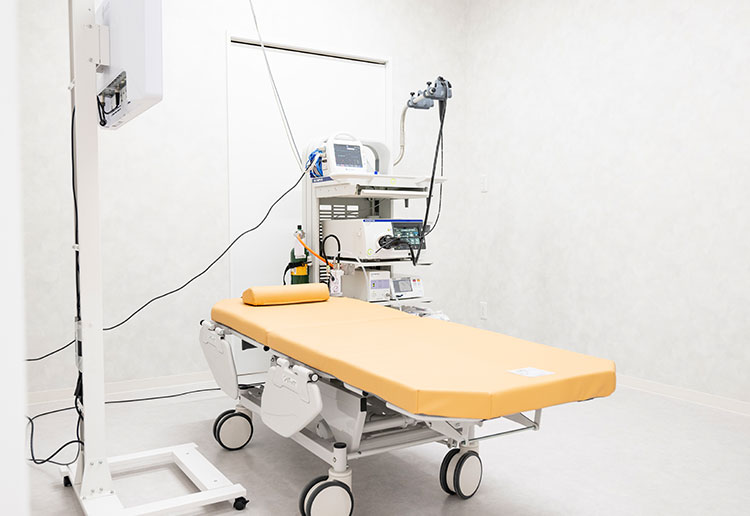
With extensive experience in conducting gastroscopy, we ensure a smooth and minimally distressing procedure. For patients who prefer, sedation is available to make the examination feel like a restful experience.
Feature 3: Minimally Discomforting Gastroscopy
Gastroscopy is classified as either transnasal or transoral, depending on the insertion route. We offer both methods, striving to minimize discomfort. For transoral procedures, sedatives and pain relief can be administered to reduce discomfort.
Feature 4: Advanced Next-Generation Endoscopy System
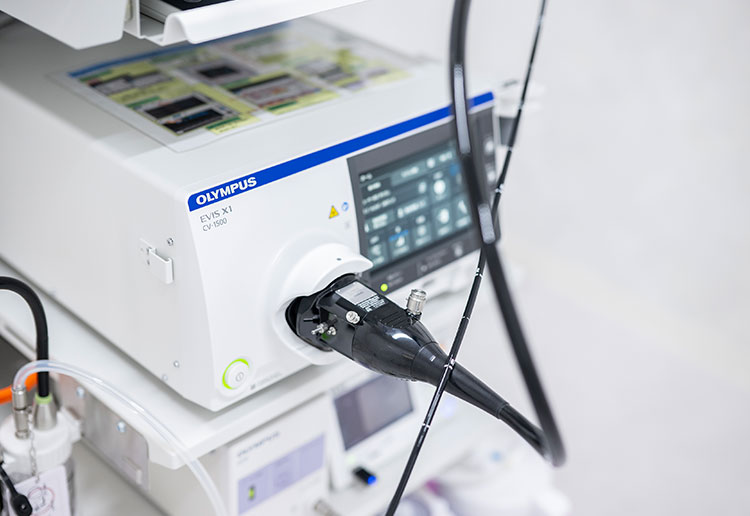
We utilize the OLYMPUS EVIS-X1 CV1500, which enhances the ability to detect even minute lesions within a short time, ensuring highly accurate examinations and treatments. This system includes the latest features such as Texture and Color Enhancement Imaging (TXI) and Narrow Band Imaging (NBI), improving the accuracy of lesion detection and diagnosis. When combined with transnasal endoscopy, precise observations and treatments are achievable.
Feature 5: Same-Day and Sunday Appointments Available
If scheduling permits and pre-examination requirements are met (such as fasting time), same-day gastroscopy examinations are available. Additionally, examinations are conducted by appointment on the first and third Sundays of each month, making it convenient for those with busy weekday schedules.
Feature 6: Recovery Room and Reduced Physical Strain
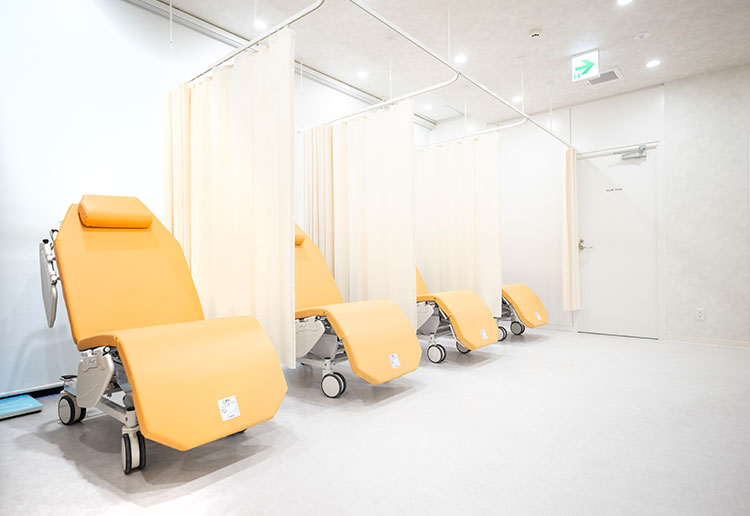
Patients who undergo sedation are allowed to rest in our recovery room after the procedure. Transportation from the examination room to the recovery room is done via stretcher, allowing patients to remain relaxed and comfortable.
Feature 7: Same-Day Gastroscopy and Colonoscopy
Patients can opt for a same-day gastroscopy and colonoscopy, reducing the number of hospital visits and limiting dietary restrictions to just one day. Whether a same-day examination is suitable depends on the physician’s assessment, so please consult us if you are interested.
Feature 8: Thorough Equipment Cleaning and Disinfection
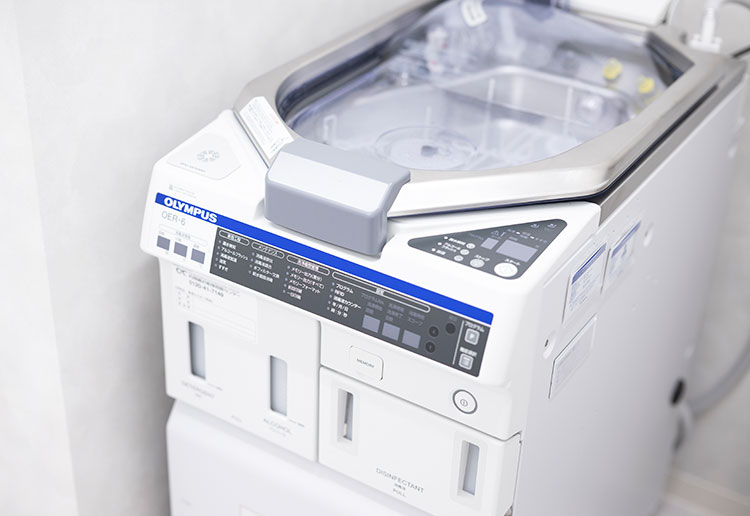
Our clinic strictly follows the guidelines set by the Japan Gastroenterological Endoscopy Society for cleaning and sterilizing endoscopes and related equipment after each use. This ensures a safe examination environment for all patients.
Gastroscopy Procedure
- The Day Before the Examination
Avoid alcohol consumption.
Eat easily digestible food and finish dinner by around 9 PM.
Water and tea are allowed without restriction. - Do not eat anything before coming to the clinic.
You may drink one glass of water or tea up to two hours before the examination.
If you take medications for high blood pressure, heart disease, epilepsy, or asthma, take them at least three hours before the examination. However, those with diabetes should avoid medication or insulin on the day of the examination to prevent low blood sugar. - Arrival at the Clinic
Arrive at least 30 minutes before your scheduled appointment.
A pre-examination interview will be conducted, and an anti-foaming agent will be administered.
For transnasal endoscopy, a spray and gel anesthetic will be applied to the nasal passages. For transoral endoscopy, a spray anesthetic will be applied to the throat.
If sedation is requested, it will be administered at this time. Note: Patients receiving sedation should not drive themselves (car, motorcycle, or bicycle) to the clinic. - Beginning of the Examination
The examination begins with the patient lying on the examination table.
The endoscope is inserted through the nose or mouth, allowing the doctor to observe the esophagus, stomach, and duodenum.
For transnasal endoscopy, patients can communicate with the doctor during the procedure.
If necessary, tissue samples may be collected for pathology tests or Helicobacter pylori testing. - End of the Examination
The procedure typically lasts 3–5 minutes if only observation is required.
Patients who received sedation will be transported via stretcher to the recovery room for rest. - Explanation of Results
The doctor will provide a detailed explanation of the findings.
If tissue samples were collected, the pathology results will be available later, requiring a follow-up visit or online consultation.
Drinking and eating can resume one hour after the examination. Start with a small sip of water to ensure swallowing is smooth and without discomfort.
Avoid strenuous physical activity on the day of the examination.
Colonoscopy (Lower Gastrointestinal Endoscopy)
A colonoscopy (lower gastrointestinal endoscopy) is a medical procedure in which an endoscope is inserted through the anus to examine the rectum, colon, and cecum using a small camera. This procedure is used to detect inflammation, polyps, cancer, ulcers, and other abnormalities.
By inserting the endoscope through the anus, doctors can observe the inner walls of the large intestine (rectum and colon). This examination allows for the detection of abnormalities such as inflammation, polyps, and tumors. If any suspicious tissues are found, a biopsy can be performed using forceps, and the sample can be examined under a microscope for further analysis. Additionally, polyps can be removed on the spot if they are detected.
During insertion, air is introduced along with the endoscope, which may cause bloating and discomfort. To minimize discomfort, our clinic uses carbon dioxide (CO₂), which is more easily absorbed by the body than regular air, and we also offer sedation to help patients relax during the procedure.
Colorectal cancer tends to develop in people over the age of 50. Since early symptoms are often subtle, the disease can progress unnoticed. Therefore, even if you have no symptoms, we strongly recommend undergoing a colonoscopy at the age of 50 and continuing regular screenings thereafter.
Common Diseases Detected by Colonoscopy
- Colorectal cancer
- Submucosal tumors of the colon
- Diverticulosis
- Inflammatory bowel diseases (e.g., ulcerative colitis, Crohn’s disease)
- Colorectal polyps
- Infectious colitis, etc.
Who Should Consider a Colonoscopy?
- Those who tested positive for fecal occult blood (hidden blood in stool).
- Those who have noticed blood in their stool (hematochezia).
- Those experiencing changes in bowel habits (diarrhea, constipation, a feeling of incomplete evacuation, thin stools, etc.).
- Those who feel a lump in their abdomen.
- Those with a family history of colorectal cancer.
- Those who are over 40 years old and have never had a colonoscopy before.
Features of Our Clinic's Colonoscopy Services
Feature 1: Experienced Physicians Performing the Examination
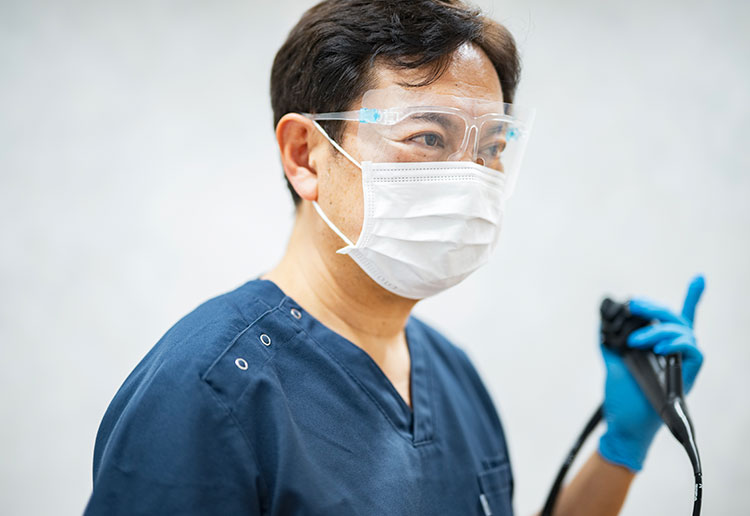
At large medical facilities, the skill level and approach of the endoscopist may vary depending on the assigned doctor. At our clinic, all colonoscopies are performed by highly experienced doctors who have trained at advanced medical institutions.
Our chief physician has conducted over 13,000 colonoscopies, ensuring a high level of expertise and accurate diagnoses.
Feature 2: Comfortable and Relaxing Procedure
We strive to minimize discomfort and conduct smooth, quick procedures. For patients who prefer, sedatives are available to allow them to undergo the examination in a relaxed, sleep-like state.
Feature 3: Painless Colonoscopy
With the use of sedatives and painkillers, patients experience little to no discomfort. If you have had an unpleasant experience with a colonoscopy in the past, please feel free to consult us.
Our clinic is conveniently located 5 minutes from Nishi-Nippori Station and 6 minutes from Sendagi Station, making it easy to visit even for those opting for sedation.
Feature 4: Private Recovery Space

We provide a private recovery area where you can rest comfortably after the procedure. If sedation is used, you can stay in the recovery space until the effects wear off. You will be transferred from the examination room on a stretcher, minimizing physical strain.
Feature 5: Private Rooms for Bowel Preparation
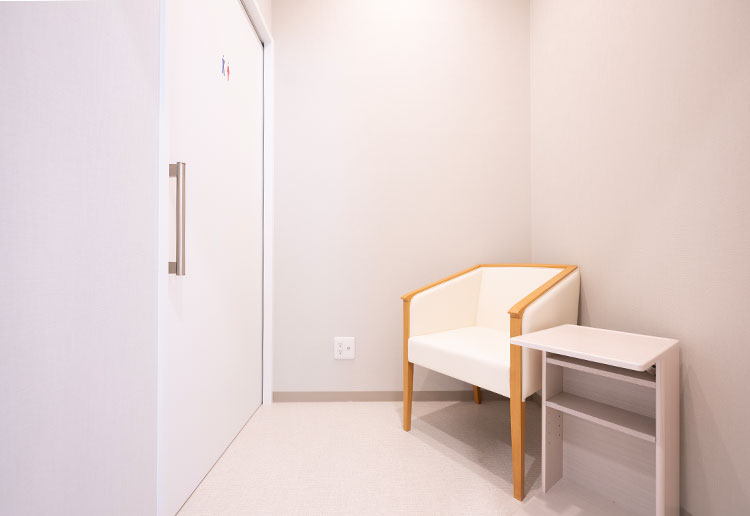
Before the colonoscopy, it is essential to clean out the intestines using a laxative. For patients who:
- Have never taken a laxative before,
- Are worried about urgent bowel movements while traveling to the clinic
- Feel anxious about potential side effects
Feature 6: Next-Generation Endoscopy System
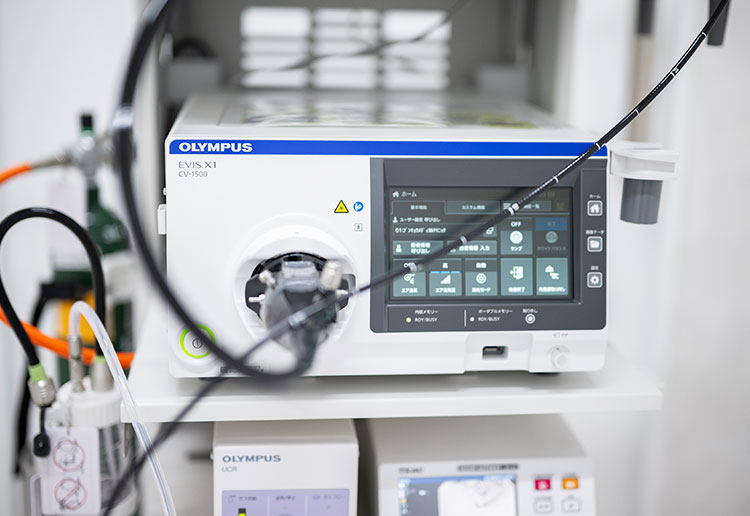
We use the Olympus EVIS X1 CV1500, which features Narrow Band Imaging (NBI), magnification, and enhanced image processing. These technologies improve the detection of minute abnormalities and allow for high-precision examinations in a shorter time.
Feature 7: On-the-Spot Polyp Removal
Most colorectal cancers originate from untreated polyps. Removing precancerous polyps can significantly reduce the risk of future colorectal cancer.
At our clinic, we remove small to medium-sized polyps during the examination itself, allowing for a same-day discharge with no hospitalization required.
For larger polyps, we will refer you to an appropriate medical facility.
Feature 8: Same-Day Gastroscopy and Colonoscopy
We offer same-day gastroscopy (upper endoscopy) and colonoscopy, reducing the number of hospital visits and the need for multiple dietary restrictions.
Since sedation is used for both procedures, patients remain relaxed throughout. However, a doctor’s evaluation is required in advance to determine eligibility for same-day testing.
Feature 9: Thorough Sterilization of Equipment

We strictly adhere to guidelines set by the Japan Gastroenterological Endoscopy Society. All endoscopes and instruments are thoroughly cleaned and sterilized after each use, ensuring a safe and hygienic environment for all patients.
Colonoscopy Procedure Flow
- 1. Pre-Examination Consultation
Before scheduling a colonoscopy, we ask patients to visit our clinic for a pre-examination consultation, where we explain precautions and dietary restrictions.
If you are too busy to visit beforehand, please contact us for alternative arrangements. - The Day Before the Examination
・Stop eating after 9:00 PM.
・Water and tea are allowed.
・Take the prescribed laxative after dinner. - On the Day of the Examination
・Do not eat breakfast.
・2–3 hours before the procedure, slowly drink the prescribed bowel-cleansing solution (one glass at a time over 10-minute intervals).
・Once the stool becomes clear, your bowel is ready for examination.For patients using our private bowel prep room, please arrive 2–3 hours before the scheduled exam.
- Examination
・Change into examination clothing and lie on your side.
・Sedation and painkillers are administered.
・The doctor inserts the endoscope and carefully examines the colon.
・If necessary, tissue samples (biopsy) or polyp removal may be performed.
The procedure takes approximately 15–30 minutes. - Post-Examination Recovery
・After the procedure, rest in our recovery area for about 1 hour.
・Patients who received sedation should refrain from driving. - Explanation of Results
・The doctor will explain the findings in detail.
・If a biopsy was performed, results will be provided later (available in-person or via online consultation).
